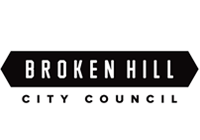Household Expenditure is modelled based on a set of expenditure items collected every 5 years in the ABS Household Expenditure Survey. Household Expenditure is a useful measure of the economic resources available to households in the area and where their income is spent. Areas with good public transport infrastructure and access to jobs may spend less on transport and more on discretionary spending such as entertainment. More disadvantaged areas may spend a higher proportion of their income on food and transport. An examination of the distribution of household spending per household may provide insights into the socio-economic status of the area.
Data source
National Economics (NIEIR) - Modelled series
Current benchmark:
Comparison year:
| Household expenditure | |||||||||
|---|---|---|---|---|---|---|---|---|---|
| Broken Hill City | 2022/23 | 2017/18 | Change | ||||||
| Household expenditure (totals) | $ per household | % of expenditure | New South Wales | New South Wales$ | $ per household | % of expenditure | New South Wales | New South Wales$ | 2017/18 - 2022/23 |
| Food | $9,592 | 10.0% | $11,751 | 9.4% | $8,882 | 9.4% | $11,734 | 9.1% | +710 |
| Alcoholic Beverages & Tobacco | $4,089 | 4.3% | $5,023 | 4.0% | $4,666 | 4.9% | $6,171 | 4.8% | -577 |
| Clothing & Footwear | $4,231 | 4.4% | $5,220 | 4.2% | $3,352 | 3.6% | $4,440 | 3.4% | +879 |
| Furnishings & equipment | $4,813 | 5.0% | $5,902 | 4.7% | $4,372 | 4.6% | $5,775 | 4.5% | +441 |
| Health | $6,936 | 7.3% | $7,980 | 6.4% | $6,187 | 6.6% | $7,152 | 5.5% | +748 |
| Transport | $7,169 | 7.5% | $12,206 | 9.7% | $9,031 | 9.6% | $14,861 | 11.5% | -1,862 |
| Communications | $1,994 | 2.1% | $2,387 | 1.9% | $1,618 | 1.7% | $2,118 | 1.6% | +375 |
| Recreation & Culture | $10,773 | 11.3% | $13,069 | 10.4% | $9,953 | 10.6% | $13,063 | 10.1% | +820 |
| Education | $3,375 | 3.5% | $4,560 | 3.6% | $3,041 | 3.2% | $4,429 | 3.4% | +334 |
| Hotels, Cafes & Restaurants | $7,780 | 8.1% | $10,012 | 8.0% | $8,608 | 9.1% | $10,477 | 8.1% | -828 |
| Miscellaneous Goods & Services | $14,425 | 15.1% | $16,638 | 13.3% | $14,167 | 15.0% | $18,124 | 14.0% | +258 |
| Housing | $17,642 | 18.4% | $27,305 | 21.8% | $17,601 | 18.7% | $27,613 | 21.3% | +40 |
| Utilities | $2,835 | 3.0% | $3,393 | 2.7% | $2,810 | 3.0% | $3,647 | 2.8% | +25 |
| Total Expenditure | $95,654 | 100.0% | $125,446 | 100.0% | $94,290 | 100.0% | $129,606 | 100.0% | +1,364 |
| Net Savings | $11,335 | 10.6% | $25,572 | 16.9% | $6,709 | 6.6% | $20,233 | 13.5% | +4,625 |
| Total Disposable Income | $106,989 | 0% | $151,018 | 0% | $101,000 | 0% | $149,839 | 0% | +5,989 |
Source: National Institute of Economic and Industry Research (NIEIR) ©2024. ©2023. Compiled and presented in economy.id by .id (informed decisions). Data are based on a 2020/21 price base for all years. NIEIR-ID data are inflation adjusted each year to allow direct comparison, and annual data releases adjust previous years’ figures to a new base year. Learn more Please refer to specific data notes for more information | |||||||||


